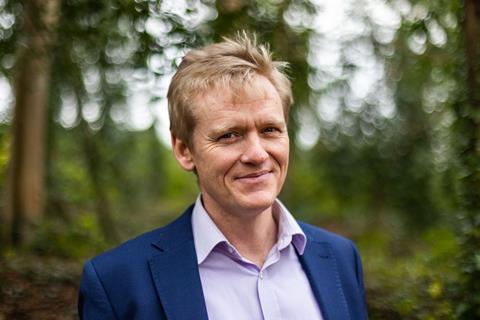B Corp-certified architects Stride Treglown has just published its first positive impact report. Pierre Wassenaar explains the importance of measuring their impact socially and environmentally

Stride Treglown was among the first architecture practices to achieve B Corp certification. That was almost two years ago and, since then, we have continued to create long-term positive impact for our clients, society and the environment.
The framework that B Corp provides is instructive and helps companies to meet high standards of verified performance, accountability and transparency on environmental, social, and governance issues.
It certainly helped us to create our first . Published in December 2022, our report provides a transparent account of our work, and has really helped us to focus on what needs to be done next.
Becoming a B Corp
Stride Treglown became a B Corp in February 2021, one of just a handful of firms in the built environment sector to join a growing, purpose-driven community. B Corp certification is a designation that a business is meeting high standards of verified performance, accountability, and transparency on factors from employee benefits and charitable giving to supply chain practices and input materials.
The B Corp movement is underpinned by the belief that society’s most challenging problems cannot be solved by governments and non-profit organisations alone. By harnessing the power of business, B Corps use profits and growth to a greater end: positive impact for their employees, communities, and the environment.
For businesses considering certification, we first recommend filling in the free B impact assessment tool on the B Corporation website. If the results are at all encouraging, go for the full certification.
The B Corp framework worked for us, but it is fairly all-encompassing and may not be the right fit for all businesses. What counts is having a solid framework that gives you an understanding of what to focus on and the tools to make improvements.
Developing a listening culture
For us, it is crucial to understand our clients, employees and end-users, and develop a listening culture around those groups. We have been collecting feedback for years but felt that we needed to engage more effectively across all our stakeholder groups.
For clients, we collaborated with Insight 6, a customer experience consultant that helped us to develop our Engage programme. Through short questionnaires and regular meetings with clients, Engage has become embedded in our everyday life and the workflow of every project.
Our aim is to receive both the positive and negative feedback, so that the desire to constantly improve is fully embedded within our culture
Our employee forum is the collective voice of our employees and helps us to listen internally in formal and informal ways.
Lastly, our Inhabitant initiative is post-occupancy evaluation done at the human-level of conversation, uncovering the lived stories of the places and spaces we create.
Our aim is to receive both the positive and negative feedback, so that the desire to constantly improve is fully embedded within our culture.
Owning our impact on the planet
As designers, we recognise that we have a responsibility and an opportunity to make a positive contribution through the buildings and communities we create. For example, we are a lead partner for Future Plymouth 2030, a collaborative project supported by the RIBA Plymouth branch, University of Plymouth Sustainable Earth Institute and Plymouth City Council.
The council formalised its support within its Climate Emergency Action Plan at the start of 2021. The initiative, which started as a webinar series, brings together the best minds in the built environment to tackle regional and national carbon targets.
We actively support organisations promoting regulatory reform (eg UKGBC, LETI and the RIBA) and through our commitment to the RIBA Climate Challenge 2030, we advocate for clients to meet the LETI targets for embodied carbon and energy in use.
Some changes might take years but will help us to create collective and long-term positive impact
We use LCA OneClick – a software that maps data for carbon impact and energy – to assess embodied carbon. This helps us to deliver low-carbon, new-build and refurbishment projects. And many of our projects use Passivhaus to deliver net zero or low carbon buildings.
Driving excellence for our clients
Our hope for the future is to push for continual improvement and inspire our clients to join us on this journey. Some changes might take years but will help us to create collective and long-term positive impact. This is why our positive impact report is just the first of many, with each one guiding the next step in our evolution.
Pierre Wassenaar is chair and head of architecture at Stride Treglown



























No comments yet